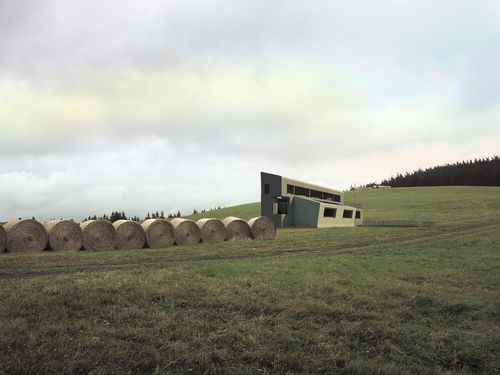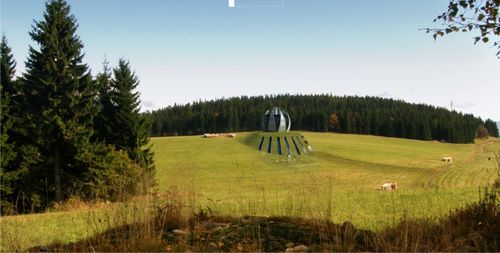REVIT OPEN 2008: sustainable “student” exhibition
The recently announced results of the REVIT OPEN 2008 contest have shown that students certainly do not lack a sense for the fundamental imperatives of sustainable construction, i.e. for low energy demands and elimination of harmful impacts of building operation on the environment. Together with the novel aesthetic concepts, this all gives remarkable qualities to the winning projects. As regards the current practice, the designs submitted for the contest may be ahead of our reality, which is usually the case with student contests, but they are definitely worth the attention as an indicator of future trends.
The REVIT OPEN contest is intended for students and fresh college graduates from architectural and building schools in the Czech Republic and Slovakia. It is organized by the software firm Autodesk, together with the Department of Model Designing of the Faculty of Architecture of the Czech Technical University in Prague (MOLAB), and every year the contest has a different topic for projects and locations – this year it focused on a self-sufficient and ecological house for the meteorological station in the Králický Sněžník Protected Landscape Area. Martin Prokš and Marek Přikryl, students of the Faculty of Architecture of Prague’s Czech Technical University, won the contest this year.

Triple minimum
The goal of the contest was to create the best design of a self-sufficient and ecological house for a meteorological station in a location with largely untouched nature at the border of Hrubý Jeseník and Rychlebské Hory mountain ranges. The design had to take into account the minimum operating costs and the minimum operating impact on the environment and to add low energy features to the house.
The winning design by Prokš and Přikryl offered a distinct architectural concept with a suitable material solution. The house constitutes a closed, low-energy tower of an aerodynamic shape, easily withstanding wind and snow. The whole top floor of the tower is used as a meteorological workplace, with a 360° view of the surrounding landscape. The panel also appreciated the technical design. A timber supporting structure is complemented with a sandwich shell covered with titanium-zinc sheets. Power is to a large extent supplied from a small wind power plant; the main source of heat is a heat pump, complemented with solar collectors. The sanitary system is designed as low-demand, with a very well-defined concept.
“The design of the meteorological tower offers interesting architecture supported by a top-quality technical design,” Dana Matějovská, of the Faculty of Architecture of the Czech Technical University in Prague, summarized the panel’s opinion. “We have to appreciate the simple shape of the building, optimized for low energy, which to some degree copies the military posts from the 1930s located in this border region.”

Architecture first and foremost
According to the organizers, this latest contest featured a growing interest, i.e. a higher number of submitted designs. The panel, chaired by Patrik Minks, of Autodesk, evaluated the designs according to the following criteria:
- architectural aspect and ability of the building to fulfil the required purpose (45%),
- technical, structural and material solution, heat losses, energy system, sanitary system (water source and disposal), operating ecology (30%),
- software design (15%),
- bonus for precise preparation in the Revit software (10%).
Kateřina Dvořáková from the Faculty of Architecture of the Technical University in Brno placed 2nd and Jan Kokeš and Zdeněk Chmel, also from the Faculty of Architecture of the Technical University in Brno, ended up 3rd. Special MOLAB award went to Tomáš Lindovský, Martin Stára and Kamil Štajgl, of the Faculty of Architecture of the Czech Technical University in Prague, for using untraditional approach and unusual design.
1 – Winning design by Martin Prokš and Marek Přikryl.
2 – The second prize went to Kateřina Dvořáková.
3 – Jana Kokeš and Zdeněk Chmel’s design came third.



 Jagg.cz
Jagg.cz Linkuj.cz
Linkuj.cz Google Bookmarks
Google Bookmarks Live bookmarks
Live bookmarks Digg
Digg Del.icio.us
Del.icio.us MySpace
MySpace Facebook
Facebook